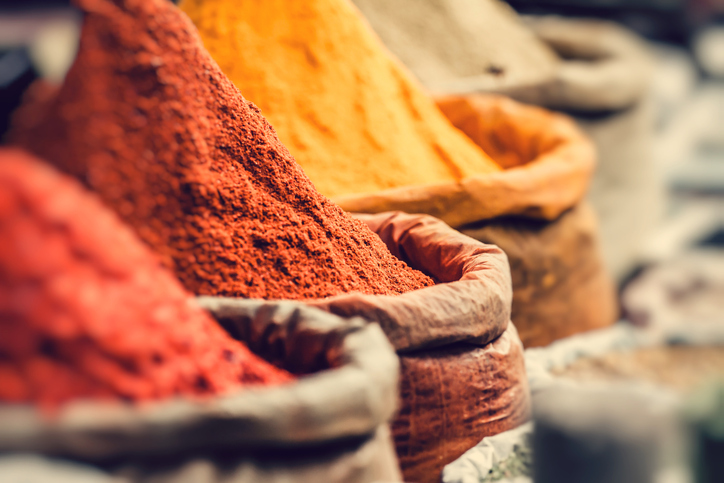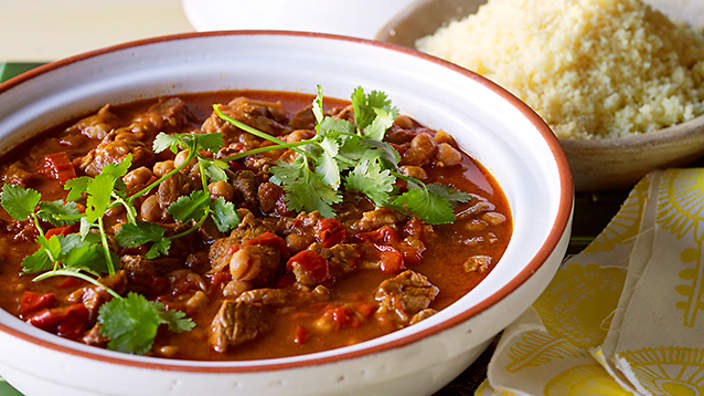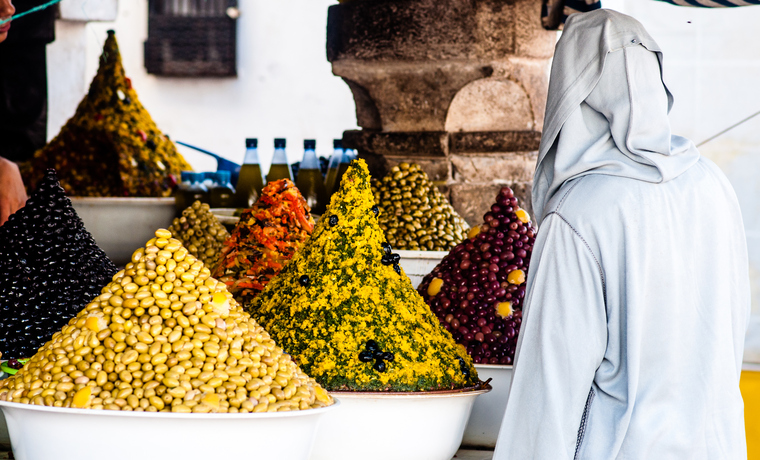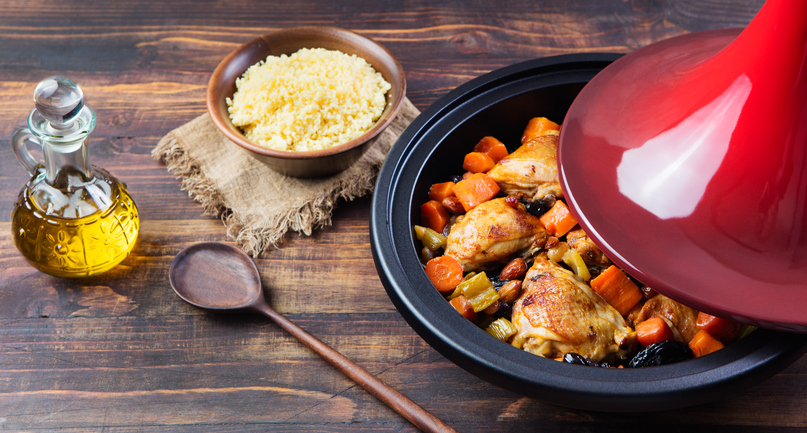Tunisian food has its roots in Berber cuisine and is an interesting fusion of the flavours from the many civilisations that have ruled the region: Arabs, Ottoman, Phoenician, Carthaginian, Jewish, Byzantine, Roman and European. However, it has always maintained a distinctive Mediterranean flavour with plenty of olive oil, vegetables, beef, lamb, fish in the coastal regions, and camel in the south of the country.
Tunisian cuisine stands out for its variety of dishes, from tasty baguettes with tuna, boiled potatoes, eggs, tomato and black olives sold at street food stalls to couscous served with fish, lamb, or beef, and vegetables.

But if there’s one thing that makes Tunisian food stand out, it has to be its exquisite tabil (a mix of spices) that’s a great addition to any dish and creates a festival of flavours, scents and textures. What may surprise some foodies at first is that Tunisians use spices in all their meals, but after the initial shock, no one can avoid being wooed by their culinary wonders.

The famous harissa never fails to disappoint. A chilli pepper paste made from a variety of peppers, herbs and spices, and it’s even a big hit at breakfast! This is quite strong, so if you’re not a fan of spicy food, tell the waiter.
The most common dishes that all restaurants, big and small, serve in Tunisia are Tunisian Salad, made using sweet peppers and chopped peppers mixed with tomatoes, vinegar and olive oil, and garnished with tuna or sardines in oil. Méchouia Salad is another, served lukewarm and a very popular first-course dish in Tunisia. Ingredients include tomatoes, green peppers, onions, garlic, all cooked in the oven or under the grill. Salads are a big part of most Tunisian meals and you’ll find them served with most dishes.

Kefteji is another Tunisian delicacy made with fried vegetables and seasoned with olive oil and harissa. Tunisian tajin is a far cry from the Moroccan version. It’s an egg pie made with meat, fish, or vegetables, and cheese and layers of brick dough interspersed like lasagne. Some say it’s similar to a Spanish tortilla or Italian frittata in appearance.
Ojja Merguez is another dish worth trying, and you won’t forget it in a hurry. It’s made with spicy mutton or beef sausage, stuffed with tomatoes, peppers and egg. Prawns can also be used instead of the sausage, and it’s usually served with bread or potatoes.
The list goes on and on, but the signature dish in Tunisia is brik or egg brik. A thin, crumbly pastry rolled into a triangular shaped pocket and stuffed with chicken or tuna, cheese and egg. The egg brik plays a very important role in the culture of Tunisian cuisine. It’s a dish that was served in the past in meals when the family of the bride or groom met for the first time. The way the man eats the brik symbolises how he will treat his future spouse, and if the would-be groom can eat an entire brik without spilling any of the egg yolks inside, he’s officially ready to marry. It’s a delicious snack and probably one of the most renowned Tunisian dishes, which is especially popular during Ramadan, along with Chorba, a typical Tunisian broth.

As far as drinks are concerned, Tunisians usually drink water with their meals and green tea with toasted pine nuts with a mouthwatering peanut pastry during the day. An authentic revelation! One of the best places to try tea with pine nuts is at one the terraces in the town of Sidi Bou Said, located about 17km from Tunis. You’ll feel like you’re in another world with Traditional Tunisian styled terraces, stunning views of the Mediterranean, small whitewashed houses with blue windows and doors, and falcon tamers offering you the chance to have your photo taken with them for just a few dinars.






